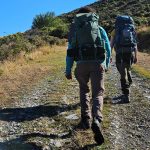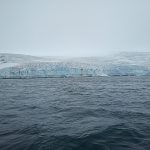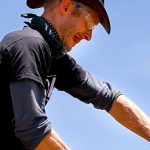Hot Topics
- December 18, 2020
- Grace Elizabeth Rodgers
Melting freshwater icebergs raise critical questions about ocean circulation. However, to find answers to what’s happening on ocean surfaces, some scientists are searching ocean floors
- July 25, 2020
- ebruess
For the past few weeks I have been taking photographs of changing food habits, cooking, areas of trash and places that remind me of all
- December 26, 2019
- zfishman
The locked office of the late climate scientist Wallace “Wally” Broecker displays a wooden ship’s wheel, mounted on a window-paneled wall behind his former desk.
- November 15, 2018
- jmelero
Climate change is rapidly taking the world as we know it into uncharted territory. What we do next and how quickly we do it can
- January 30, 2018
- acohen
It’s as if there’s a new apocalyptic blockbuster in theaters, and Joerg Schaefer has a front-row seat.
Some of the world’s foremost climate scientists shared their
- October 31, 2017
- acohen
Richard Alley smiled widely, beer in hand, as he welcomed a group of student journalists to the annual Comer Climate Conference this fall. "I bet
- December 16, 2016
- jcantieri
Without the little notches, plastic ketchup packets are almost impossible to open no matter how much you pull or tear. Cracks in the world’s ice
- November 22, 2016
- kcalagna
Sea level rise – a direct impact of a warming climate and melting ice – threatens island nations and coastal communities across the world.
Photo at
- July 5, 2016
- abigailfoerstner
Aaron Putnam of the Climate Change Institute at the University of Maine is searching for the switches that caused the Earth to lurch out of
- December 8, 2015
- kevinstark
A mystery from some 18,000 years ago directly impacts how scientists understand the threat of climate change today.
The Earth, shivering though the end of an
Categories
Latest Articles
February 1, 2024
Contact Information
Abigail Foerstner, Managing Editor and Medill Associate Professor




